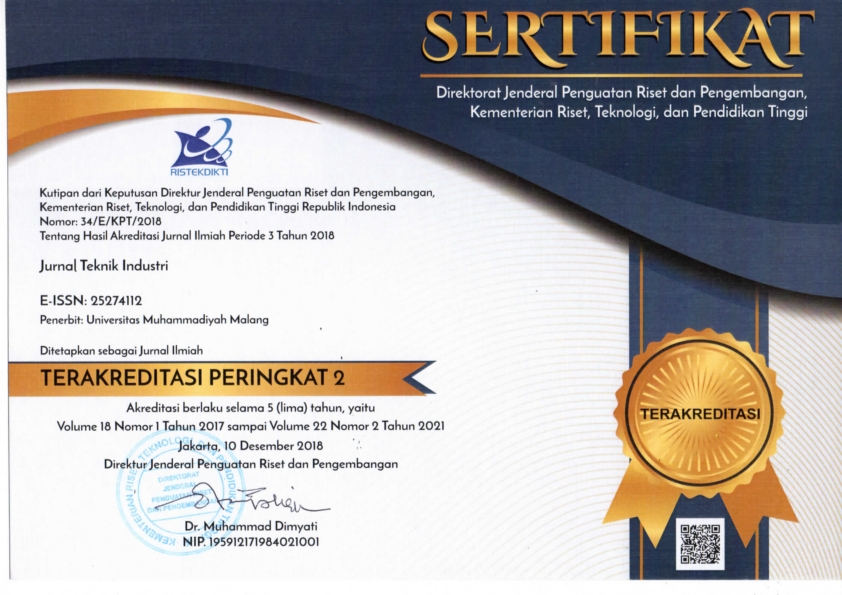Metode REBA Untuk Pencegahan Musculoskeletal Disorder Tenaga Kerja
DOI:
https://doi.org/10.22219/JTIUMM.Vol18.No1.19-28Keywords:
Ergonomic, Musculoskeletal Disorder, Nordic Body Map, REBAAbstract
CV. Wijaya Kusuma is a company producing sanitair. The production process is done manually. Workers work with work postures bent and squatting. Posture work bent and squat reduces the comfort. Posture work bend and squat and potential risks of musculoskeletal disorder. REBA method is suitable to solve the problem. REBA is a method used in job posture analysis. REBA method used to quickly assess the posture of the neck, back, arms, wrists, and feet of a worker. The initial stage of the research is to divide the Nordic Body Map (NBM) questionnaire. NBM aims to know complaints of body parts before and after work. The purpose study is to determine the cause of complaints of musculoskeletal disorders (MSDs) labor. This study provides a solution to the problem of labor MSDs complaints. The results show 6 work postures with "moderate" risk levels, 4 high-risk "work postures". All work postures in the sanitair production process require corrective action posture.Downloads
References
E. Nurmianto, Ergonomi konsep dasar dan aplikasinya. Surabaya: PT Guna Widya, 1996.
S. H. Tarwaka and L. Sudiajeng, Ergonomi untuk keselamatan, kesehatan kerja dan produktivitas. Surakarta: UNIBA, 2004.
F. Alexander, "Identifikasi Risiko Ergonomi Pada Stasiun Perakitan Daun Sirip Diffuser Di PT X," J@ Ti Undip: Jurnal Teknik Industri, vol. 3, pp. 108-117, 2008.
S. Higgnet and L. Mcatamney, "Technical Note, Rapid Entire Body Assessment," Applied Ergonomics, vol. 31, pp. 201-205, 2000.
K. H. Kroemer, H. B. Kroemer, and K. E. Kroemer-Elbert, Ergonomics: how to design for ease and efficiency: Pearson College Division, 2001.











